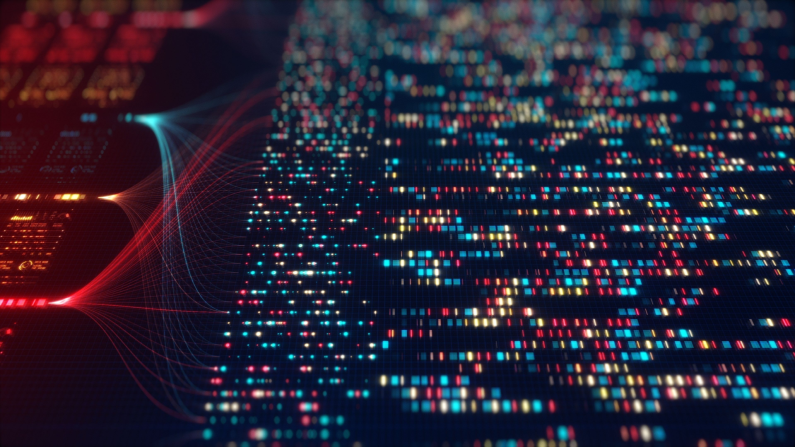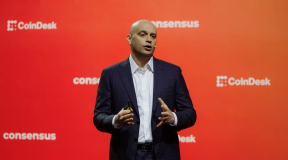We stand at the threshold of a technological transformation comparable to the shift from steam to electricity or from analog circuits to integrated microprocessors. Today, the focus is on quantum computing—a technology that promises not merely to accelerate familiar computations but to redefine the very principles of how we interact with information. In this article, we’ll explore how quantum computers work, why they matter, and how soon quantum technologies may become part of our everyday lives.
Principles of Quantum Computing

To understand why quantum computing is not just another innovative alternative to classical systems—but a fundamentally different approach—it’s important to grasp its key concepts.
Classical computing operates with a bit—a unit of information that can take on values of either 0 or 1. Every traditional computer, from smartphones to data centers, uses this binary model.
In quantum computing, the unit of information is a qubit—a physical system that can exist not only in state 0 or 1 but also in a superposition of both states simultaneously until it is measured. This means a quantum machine can represent an exponentially larger number of states compared to a classical bit.
Another foundational concept is entanglement. When two or more qubits are entangled, the state of one instantly depends on the state of the other—even if they are physically separated. This creates correlations impossible in classical systems. When two qubits are entangled, their combined state cannot be described independently but only as a whole. While two classical bits can only occupy four fixed combinations (00, 01, 10, 11), two entangled qubits can exist in all those combinations at once, with their states correlated.
When a third, fourth, or tenth qubit is added, the number of possible states grows exponentially. This allows quantum algorithms to explore a massive number of potential solutions simultaneously—something unattainable for classical computers. For instance, Grover’s algorithm accelerates searches in an unstructured database by amplifying the probability of correct answers through the interference of entangled states rather than checking every possibility sequentially.
Entanglement creates deep correlations between qubits. Measuring one instantly reveals the state of another—even if it’s across the lab (or, theoretically, across the galaxy). This phenomenon underpins:
-
Quantum networks and communications — enabling ultra-secure communication channels (quantum cryptography, quantum key distribution, or QKD). Here, entangled photons allow information transfer that cannot be intercepted without destroying the state.
-
Quantum simulations — used to model systems where particle interactions themselves depend on quantum entanglement (such as chemical reactions or superconducting materials).
For example, when simulating a water molecule, a classical computer must calculate all possible electron interactions, whereas a quantum computer naturally reproduces them by using entangled qubit states.
Entanglement also makes quantum teleportation possible—the transfer of a qubit’s state from one point to another without moving the physical particle itself. This isn’t “matter teleportation” in a sci-fi sense but rather quantum information transfer, forming the basis for future quantum networks and the next-generation internet. In the 2020s, researchers at Caltech and Fermilab successfully demonstrated quantum teleportation across tens of kilometers via optical fiber.
In quantum computing, entanglement also plays a role in error correction. Since direct copying of a quantum state is impossible (due to the no-cloning theorem), stability is achieved by distributing information across multiple entangled qubits. If one loses coherence, the information is still preserved in the system. This principle underlies the creation of logical qubits, resistant to noise and scalable for practical quantum machines.
Finally, there’s interference—a mechanism by which quantum algorithms amplify the probability of correct answers and suppress incorrect ones by combining the amplitudes of quantum states.
In the quantum world, a particle’s state is described by a wave function—not just “0” or “1,” but a probability amplitude of being in multiple states. Like waves on water, these amplitudes can reinforce each other (constructive interference) or cancel each other out (destructive interference).
A quantum computer, therefore, can explore thousands of potential answers simultaneously. The algorithm’s goal is to tune the wave interactions so that:
-
correct answers amplify each other,
-
incorrect ones cancel out.
When qubits are measured, the wave function collapses, and the most probable outcome—the correct solution—emerges.
In practice, this means a quantum computer doesn’t simply perform the same operations as a classical one, only faster—it tackles problems of a completely different order, where exploring vast state spaces or modeling complex interactions is computationally infeasible for conventional systems.
Quantum computers won’t replace classical ones entirely—they’ll complement them, forming hybrid systems. Yet even now, quantum technologies are shaping the future by:
-
redefining cybersecurity standards (traditional encryption will face serious challenges);
-
unlocking scientific and medical breakthroughs;
-
creating strategic advantages for nations and industries that master them first.
Why It Matters

Cybersecurity
One of the most discussed topics is the threat quantum machines pose to traditional encryption. Algorithms such as RSA and ECC rely on the difficulty of factorization or discrete logarithms—and this is precisely where quantum algorithms excel.
Quantum computing and cybersecurity are closely intertwined: quantum development could both break current protection systems and enable entirely new, far stronger ones.
Companies are already preparing for the post-quantum era, where classical encryption methods will no longer suffice. When a quantum machine can execute certain algorithms faster than any classical device, it could, in theory, crack cryptographic keys—forcing businesses, banks, and governments to adopt quantum-resistant standards.
Organizations like NIST (U.S.) are already developing and standardizing such algorithms. Leading approaches include:
-
Lattice-based cryptography — one of the most promising, relying on complex multidimensional geometric problems hard even for quantum systems;
-
Code-based and multivariate polynomial schemes;
-
Hybrid systems, combining classical and quantum-secure algorithms.
In July 2022, NIST selected the first four algorithms for standardization, including CRYSTALS-Kyber (for key exchange) and CRYSTALS-Dilithium (for digital signatures).
Medicine and Science
Medicine and materials science face challenges that strain classical computation: molecular interactions, biochemical networks, protein dynamics—all incredibly complex to simulate. Quantum computing could change that by modeling molecules with unprecedented precision, optimizing drug design, and accelerating discovery.
IBM and Cleveland Clinic are already using quantum simulations to study protein structures and molecular optimization. In 2023, Google Quantum AI successfully modeled the interaction of a ferrocene molecule—a task that once took months on classical supercomputers.
In the near future, this could mean:
-
reducing drug discovery timelines from years to weeks,
-
developing personalized medicine tailored to an individual’s DNA.
In scientific research—physics, chemistry, climatology—quantum acceleration opens new horizons: modeling materials or reactions where classical computers stall. A protein molecule with hundreds of atoms requires millions of classical calculations to describe each interaction. Quantum systems, operating under the same physical laws as nature itself, handle such tasks naturally.
Quantum simulations are already being used to design superconductors, catalysts, batteries, and solar cells. Microsoft Quantum explores quantum algorithms to model catalysts that enhance chemical reactions for fuel and fertilizer production, while IBM uses them to develop new low-loss materials—potentially paving the way for room-temperature superconductors.
Institutions like CERN, Fermilab, and NASA use quantum algorithms for:
-
data analysis from the Large Hadron Collider,
-
experimental optimization,
-
modeling black holes and quantum spacetime foam.
Scientific and Industrial Applications
Quantum computing also transforms optimization, simulation, and AI tasks. Industries from logistics to finance rely on optimization—finding the best solution among millions of possibilities.
Siemens applies quantum models to optimize energy grids and supply chains. J.P. Morgan Chase explores quantum techniques for financial modeling and risk assessment.
Volkswagen and D-Wave used quantum algorithms to optimize bus routes in Beijing, reducing travel time and energy use. Airbus uses quantum simulations for aerodynamic flow modeling and wing design, while BMW’s Quantum Challenge investigates supply-chain management and battery design optimization.
Quantum algorithms such as QAOA (Quantum Approximate Optimization Algorithm) and VQE (Variational Quantum Eigensolver) can find global optima in complex systems faster than classical heuristics.
Quantum simulations help forecast the behavior of molecules and materials critical to:
-
next-generation batteries (lithium-sulfur, solid-state),
-
hydrogen fuel catalysts,
-
carbon capture systems combating climate change.
ExxonMobil, BASF, and TotalEnergies are already collaborating with IBM Quantum and Rigetti to simulate reactions determining fuel and material efficiency.
The Key Players: Google, IBM, Huawei

Quantum computing today is a global race, and these are its leading contenders:
-
IBM — A pioneer providing cloud access to its quantum processors and developing Qiskit, an open-source quantum programming framework. IBM plans to build practical quantum machines with hundreds of logical qubits by 2029.
-
Google — Through its Quantum AI division, Google achieved major breakthroughs, including the Sycamore processor and a demonstration of quantum supremacy. Its newer Willow chip aims to reduce error rates and boost performance toward scalable quantum computing by 2030.
-
Huawei — Less publicly visible but deeply involved in China’s quantum hardware and infrastructure research, making it a key global player.
Other notable companies include IonQ, Quantinuum, and D-Wave, forming a competitive ecosystem racing not only for qubit power but also for stability, software, and integration.
When Quantum Technologies Enter Everyday Life

IBM and Google project that industrial-scale quantum computers—with stable logical qubits—could arrive before 2030.
The next 2–4 years may mark the era of “quantum utility”, when quantum systems start solving practical, real-world problems even before they become mainstream.
What that might look like:
-
Enterprise and research use — quantum services offered via the cloud (QaaS: Quantum-as-a-Service).
-
Security — businesses adopting post-quantum encryption schemes.
-
Medicine and materials — quantum modeling becoming standard in R&D.
For everyday users, the impact will be indirect: faster drug discovery, smarter logistics, improved digital services, and perhaps quantum-enhanced infrastructure in finance or cloud platforms.
This rollout will be gradual—beginning with hybrid classical-quantum systems and expanding as hardware stabilizes. Challenges remain: error correction, qubit coherence, scalability, cooling requirements, and software ecosystems.
For business leaders and IT strategists, now is the time to:
-
assess quantum readiness of infrastructure,
-
explore industry-specific use cases,
-
prepare skills and partnerships for the coming shift.
Analysts warn that companies ignoring the quantum transition may already be “too late.”
Quantum technologies won’t just speed up our machines—they’ll redefine the very paradigm of computation:
from sequential bit processing to simultaneous manipulation of quantum states;
from optimizing familiar problems to simulating complex systems once deemed unsolvable.
What once seemed science fiction is now a strategic priority—for corporations, governments, and science alike.
With clear roadmaps from leaders like Google and IBM, the market is preparing for a new technological horizon.
If you work in business, IT, or media—or simply care about the future of technology—pay attention to quantum computing.
It won’t replace everything overnight, but it’s already shaping the decade ahead.
Share this with your friends!





Be the first to comment
Please log in to comment